LG QNED91T is the only MiniLED backlit television from LG for 2024, drawing attention due to its innovative use of a VA panel. This is a definite departure from the previous standards of the Korean manufacturer in its top LCD televisions, which usually installed IPS/ADS panels. However, the effect is positive – the panel combined with local dimming offers really good contrast. Blacks are deep and should satisfy most users. LG 65QNED91T6A is truly a bright television, so placing it in slightly challenging lighting conditions will not pose a challenge. In terms of motion smoothness, the QNED91T shows top performance. The TruMotion feature works great, allowing adjustment of the picture to personal preferences – from a classic film look to a more fluid effect. The 120Hz panel makes it ideal for sports or gaming. For the latter, LG has prepared something special – four full HDMI 2.1 ports with 48 Gbps bandwidth, allowing the enjoyment of features like VRR and ALLM (and more). This, combined with low input lag, makes this equipment an excellent choice for console or PC gaming. Daily use of QNED91T is pure pleasure, mainly thanks to the WebOS system. The interface is intuitive, there are plenty of apps, and the included Magic Remote significantly facilitates navigation through the menu. The operation is quick, and using the television is comfortable thanks to the voice assistant. Unfortunately, the television also has its weaknesses. Despite the advantages of the VA panel in terms of high contrast, the algorithms responsible for local dimming of the miniLED zones do not perform the best. In HDR content, there are situations where the image is either too bright or excessively dark, which particularly affects scenes requiring precision. Additionally, in practice, the differences between standard HDR10 and Dolby Vision are almost invisible. This is quite a disappointment, especially in this class of television. Nevertheless, LG QNED91T is an interesting choice for those who need a bright television with considerable gaming capabilities and value the convenience of the WebOS system. We recommend considering alternative models, such as the OLED B4 from the 2024 line, which can be purchased for a similar price if the priority is picture quality in HDR content, such as Netflix, Prime Video, or Max.
- Matching (Score)
- Our verdict
- TV appearance
- Where to buy
- Contrast and black detail
- HDR effect quality
- Factory color reproduction
- Color reproduction after calibration
- Smoothness of tonal transitions
- Image scaling and smoothness of tonal transitions
- Blur and motion smoothness
- Console compatibility and gaming features
- Input lag
- Compatibility with PC
- Viewing angles
- TV efficiency during daytime
- Details about the matrix
- TV features
- Apps
- Playing files from USB
- Sound
LG QNED91T6A vs Hisense E8Q
Direct compare
Check the best price offer:
LG QNED91T6AQNED91T / QNED90T
E8Q

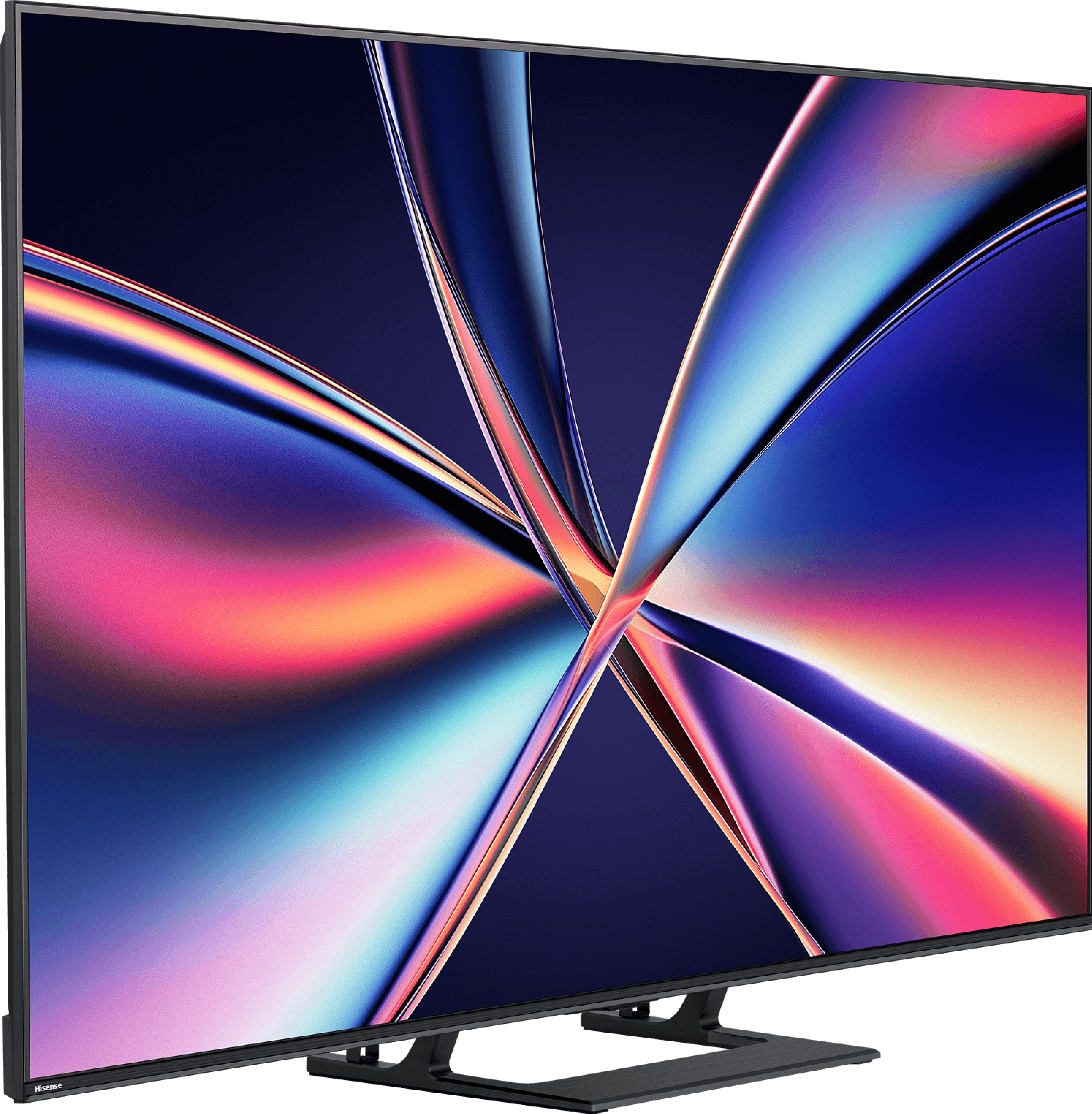
Panel type: LCD VA
Resolution: 3840x2160
System: WebOS
Model year: 2024
Complete the survey to find out the result

Panel type: LCD VA
Resolution: 3840x2160
System: VIDAA
Model year: 2025
Complete the survey to find out the result

Overall rating
7.2
7.0
Movies and series in UHD quality
6.5
6.7
Classic TV, YouTube
6.7
6.8
Sports broadcasts (TV and apps)
6.8
6.5
Gaming on console
8.5
8.0
TV as a computer monitor
7.5
8.6
Watching in bright light
6.1
6.2
Utility functions
9.0
8.9
Apps
8.3
7.7
Sound quality
6.9
5.5
Complete the survey to find out what fits your preferences
Advantages
Good contrast - VA panel
Suitable for gamers: HDMI 2.1, low input lag, 120Hz
Decent brightness - works well for daytime viewing
Great operating system WebOS - Magic Remote, voice functions
Recording from built-in tuners
Great contrast and deep black
Very good fluidity of tonal transitions (close to reference level)
High brightness
Support for 4K 144 Hz and even 240 Hz in Full HD
VRR, ALLM, G-SYNC – a complete package for gamers
Low input lag
Many classic TV features built into the VIDAA system
Disadvantages
Poor management of dimming zones
No adaptation in HDR - no difference between HDR10 and Dolby Vision
Poor viewing angles
No support for HGiG (makes HDR setup difficult on consoles)
U7Q
Our verdict
The Hisense E8Q is a television that clearly draws heavily from the U7Q model – and that's a good thing. After all, it is its European version, not another "diet" mutation. Just a few moments with this screen reveal that the E8Q is trying to impress. And in many ways, it really succeeds. Right off the bat – what stands out: the black is deep, the contrast is high, and the brightness exceeds the threshold that we can simply call satisfying. Let's add to that almost perfect smoothness in tonal transitions, and we have an image that looks very mature, especially for this price segment. In gaming? Just as good. It supports VRR, ALLM, 144 Hz in 4K, and even 240 Hz in Full HD – it's hard to find fault here. Well… almost. Because the E8Q has one additional flaw compared to the U7Q – the sound. In our unit, even at moderate volume levels, the back of the casing started to resonate, generating quite unpleasant crackling noises. This might be a flaw in the test sample, but since the U7Q simply performed better – it's worth noting. Especially if you find both models at a similar price. We can confidently state that the E8Q is a television that can boldly compete for the attention of those looking for a quality Mini-LED at a reasonable price. If a good deal comes along, it's definitely worth it – because we get almost the same as with the U7Q. And that means a really solid picture, excellent gaming features, and overall very good equipment that you can stick with for a long time.
TV appearance





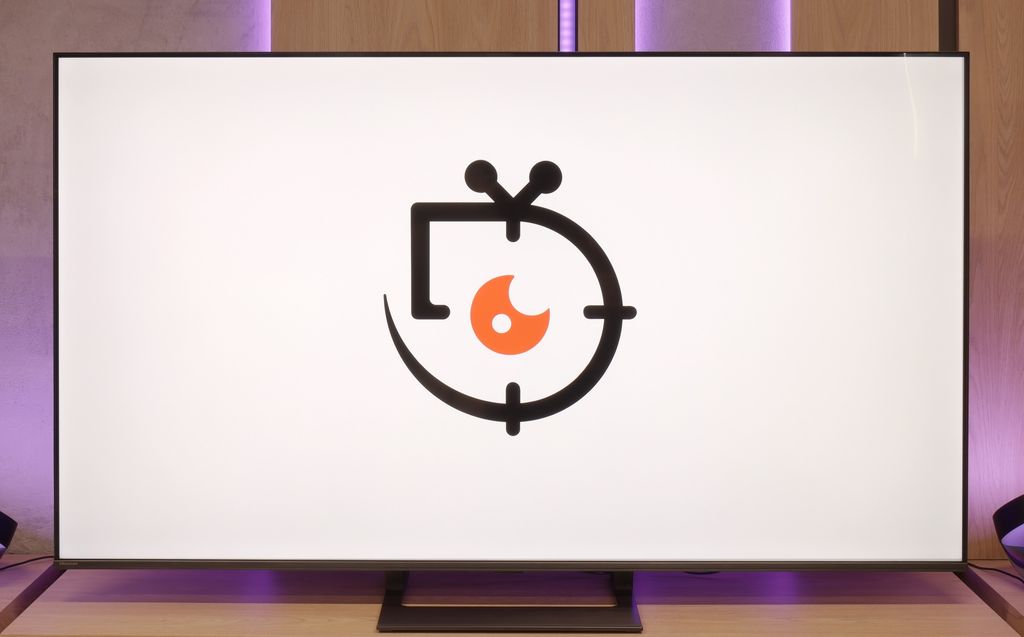
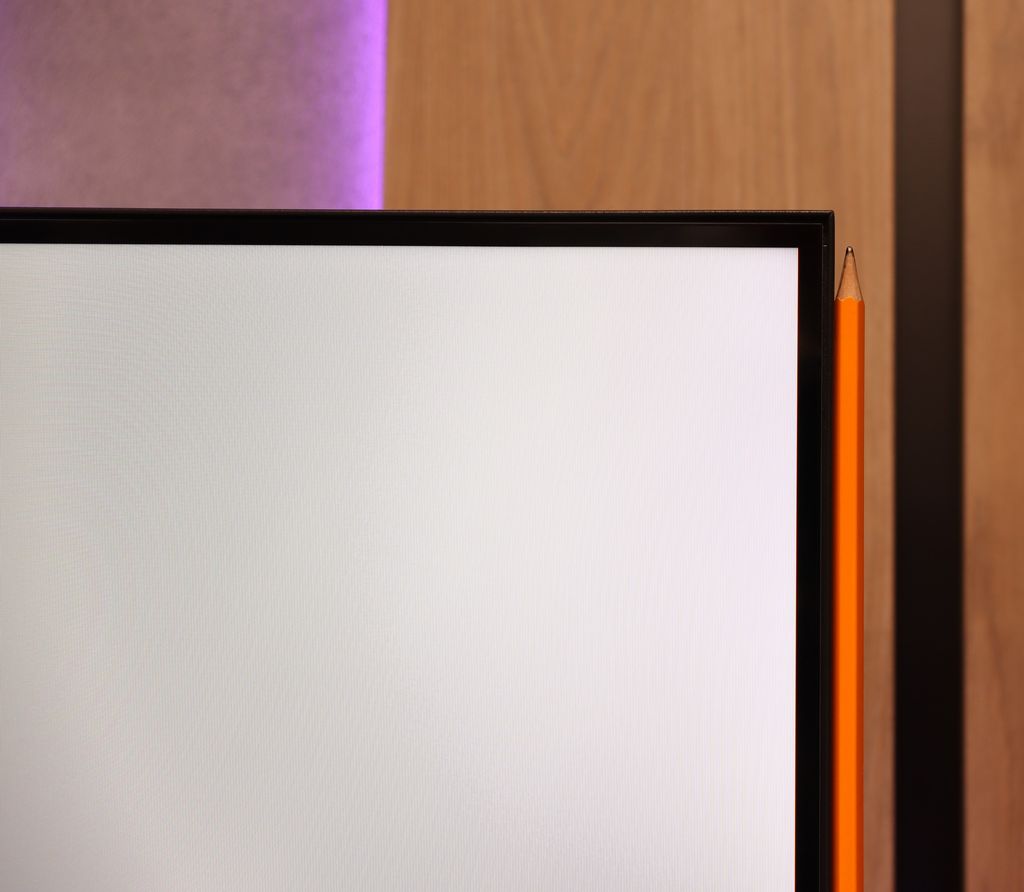
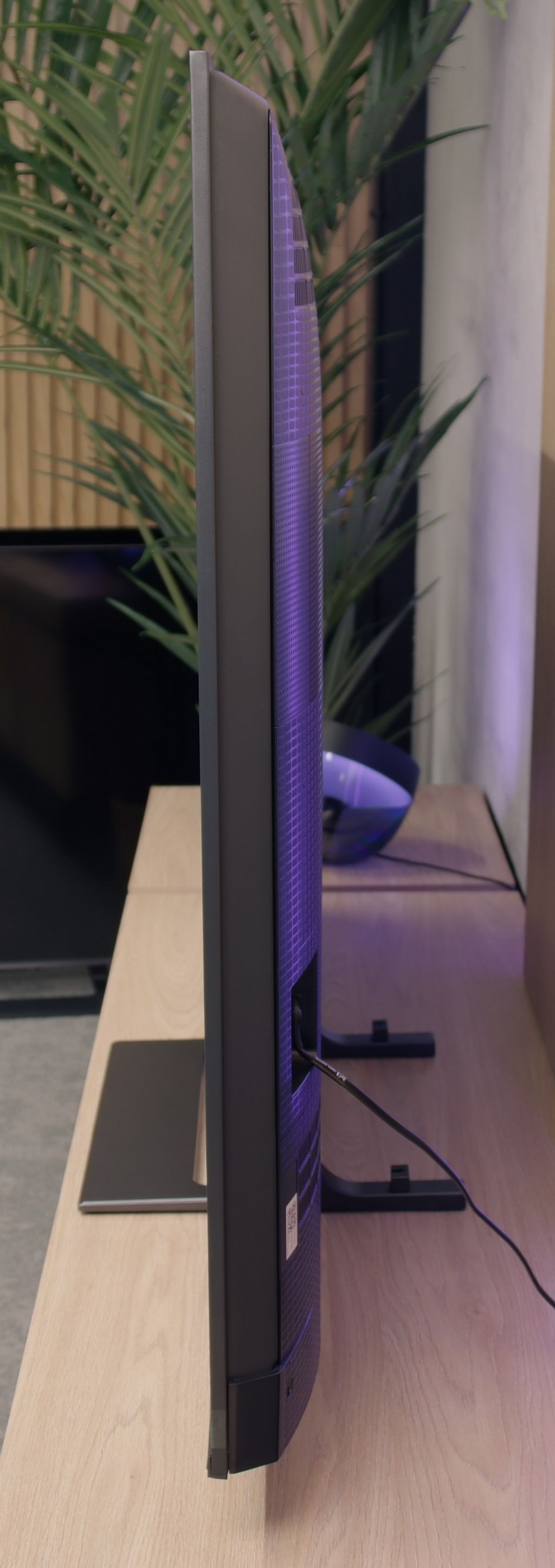
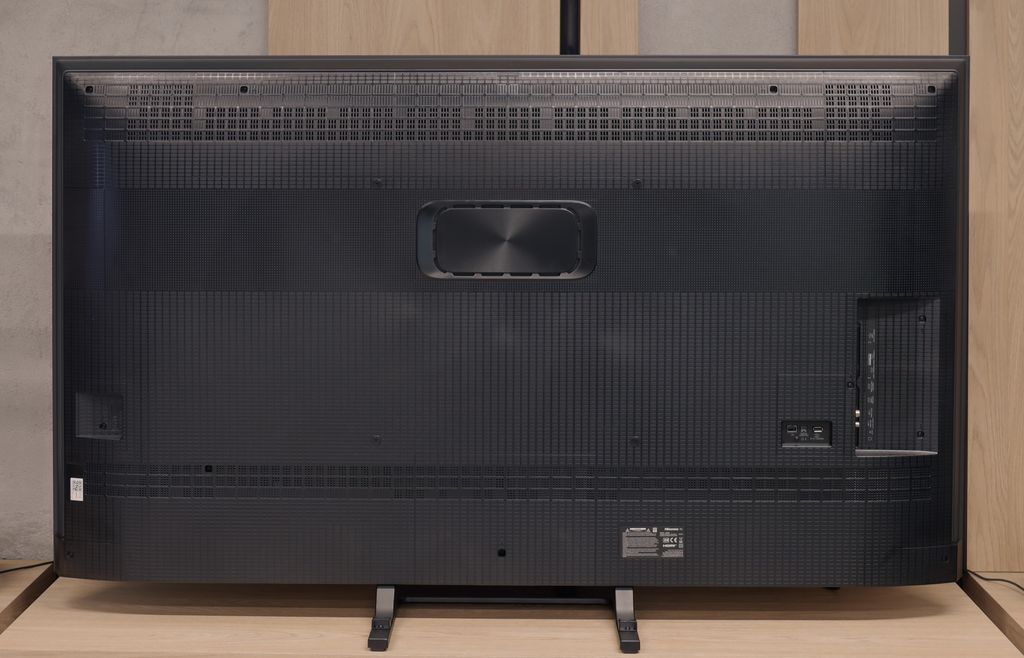
Contrast and black detail
6.8/10
7.6/10
Local dimming function: Yes, number of zones: 160 (16 x 10)
Local dimming function: Yes, number of zones: 220 (10 x 22)
Contrast:

Result
126,250:1

Result
20,900:1

Result
19,200:1

Result
4,900:1

Result
4,550:1

Result
277,000:1

Result
43,700:1

Result
15,750:1

Result
8,850:1

Result
6,350:1
Halo effect and black detail visibility:

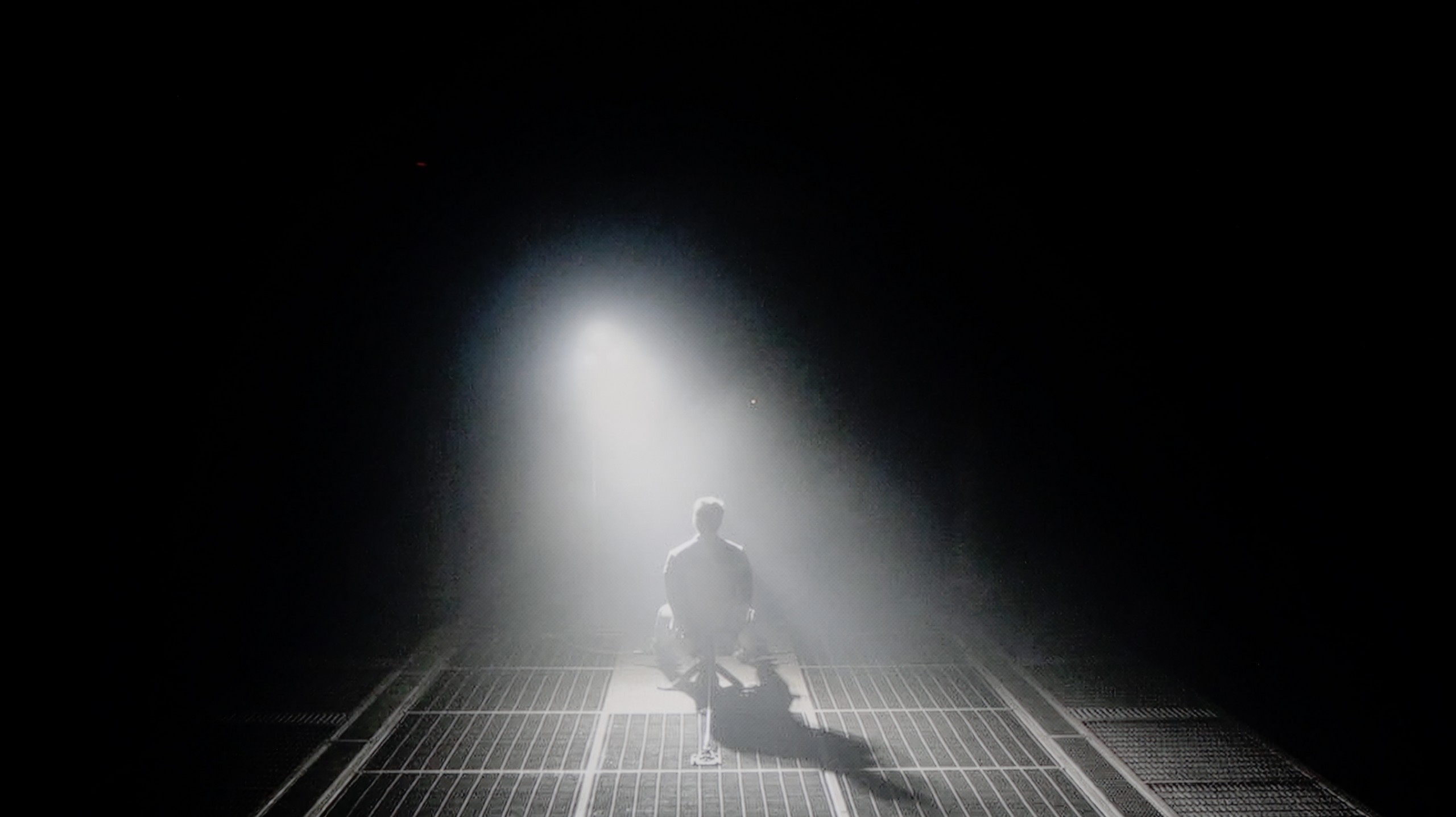
QNED91T is a television with MiniLED backlighting, and in the tested size of 65", we counted 160 local dimming zones. The unit we tested, with a "1" at the end, is equipped with a VA panel, which offers significantly better contrast than IPS panels, which – note – can be found in the LG QNED90T. Therefore, it is worth being careful when choosing a version to avoid disappointment regarding contrast. The QNED90T model is hard to acquire in Poland, but distribution can vary. Returning to our contrast tests, it performed really well in less demanding scenes. For example, in one of the scenes from the film "Oblivion," we observed perfect separation of lights – it looked impressive. However, not everything is so straightforward. In a scene from "Sicario 2," we noticed that the screen is distinctly darker, deviating significantly from the reference image appearance. The television effectively eliminates the halo effect (i.e., glow around objects), but this comes at the cost of brightness – quite a considerable one. Despite these compromises, the contrast of the LG 65QNED91T6A is really solid. Of course, as with MiniLED TVs, one must reckon with certain limitations, but the overall impressions are positive.
Similarly to the U7Q, the E8Q model uses a VA panel and Mini-LED backlighting. The number of dimming zones also remains at a very similar level – in the 65-inch variant we tested, we counted 220 zones, which is exactly the same as in the U7Q. On paper, this looks really good for this price segment, but even better – in practice. The contrast is high, and black can be really deep. In many scenes, the lights are clearly separated, and the image gains in spaciousness. This is one of those cases where Mini-LED shows it can approach the quality of OLEDs – provided that we are aware of the limitations we need to consider. In very difficult scenes, there may be slight lightening or minor halo effects around bright objects, but these are phenomena typical of this technology and are not very noticeable. Ultimately – the contrast and blacks in the E8Q are really solid, almost identical to those in the U7Q model. It’s hard to find fault with this, especially when we look at the price of the television.
HDR effect quality
5/10
4.5/10
Luminance measurements in HDR:

Result
1069 nit

Result
180 nit

Result
577 nit

Result
96 nit

Result
674 nit

Result
531 nit

Result
148 nit

Result
320 nit

Result
100 nit

Result
625 nit
Scene from the movie “Pan” (about 2800 nits)


Scene from the movie “Billy Lynn” (about 1100 nits)

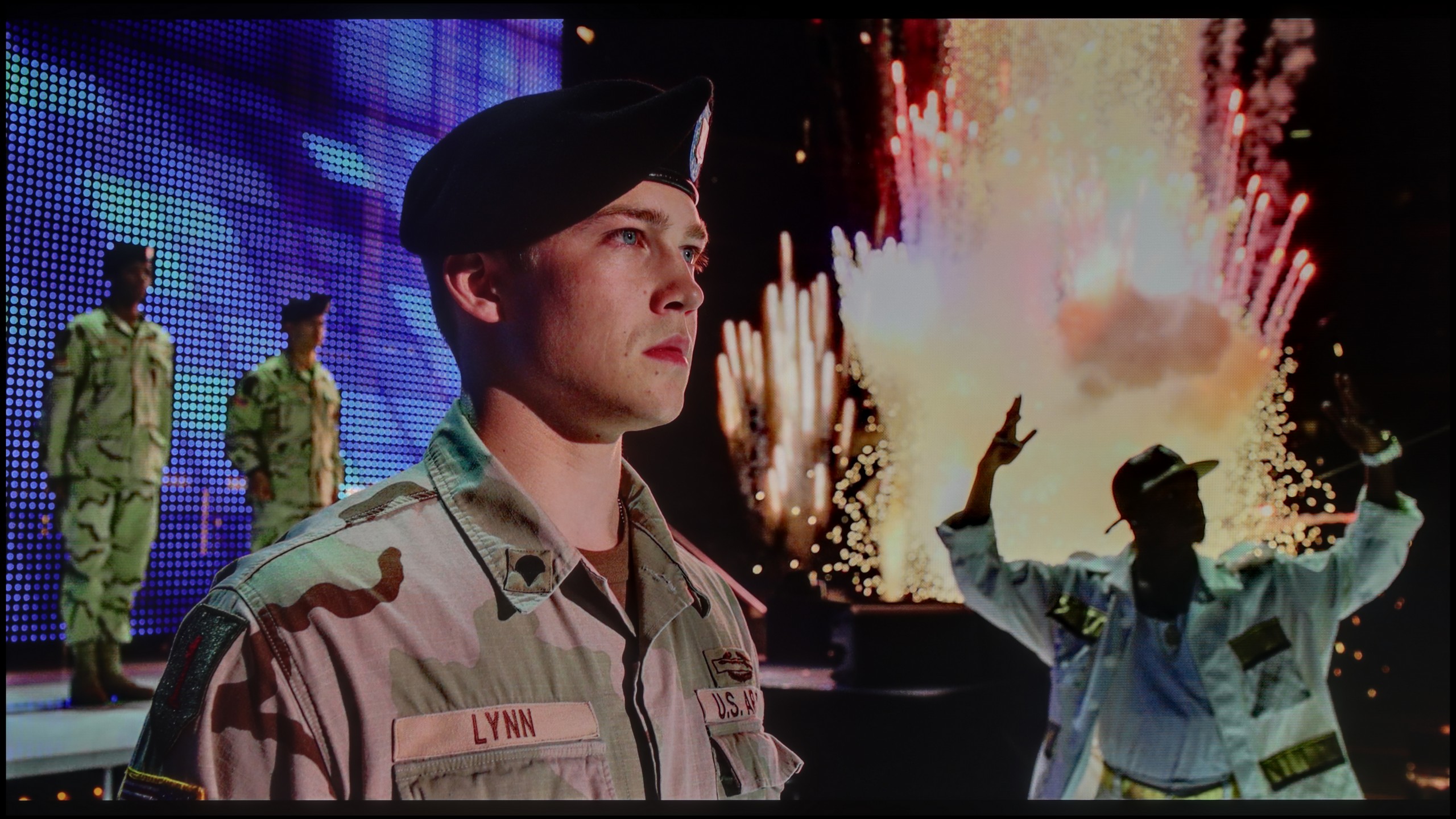
Static HDR10


Dynamic: Dolby Vision
Dynamic: Dolby Vision


HDR luminance chart:
Hisense E8Q
Luminancja HDR
Luminance of RGB colors
LG QNED91T6A
Luminancja HDR
Luminance of RGB colors
As befits a MiniLED television, QNED91T LG easily exceeds the magic barrier of 1000 nits on the luminance chart. In scenes where light played a key role, the effect was truly decent. For example, 1000 nits in the first scene of "Life of Pi" is really an impressive value, and the 600 nits achieved in scenes three and five allowed us to feel the true magic of HDR. However, problems arise with very small light elements on the screen, such as the moon, lanterns, or lamps. A value of around 100 nits - to put it bluntly - is disappointing, as these elements are so dark that they are barely visible. It is worth praising the television for covering the DCI-P3 colour gamut at 96% and BT.2020 at 75%. LG QNED91T leaves us with mixed feelings, mainly due to very aggressive dimming algorithms, which, while effectively eliminating the halo effect, do impact the brightness of smaller elements.
Since the E8Q is a twin of the U7Q, it’s no surprise that the quality of the HDR effect is almost identical. On paper, it looks promising – a peak brightness of 800 nits can impress in many scenes. Fragments like the flashes of light in “The Meg” or shots of the sun in “Life of Pi” can indeed evoke a “wow” effect. But the longer we watch, the more we notice the limitations. The problem arises when small, bright details are supposed to be displayed on a dark background. In such situations, the dimming algorithms try to preserve contrast but end up dimming what should shine the brightest. Instead of dazzling details, we get almost invisible points of light. This is typical for Mini-LED in this price segment and is not surprising – but it’s worth knowing that the HDR effect won't always be fully preserved. Fortunately, the color reproduction offers reasons to be satisfied. A coverage of the DCI-P3 color gamut at around 94% is a very good result, and the applied quantum dot layer (more specifically, PFS) does its job – colors are saturated and vibrant, especially with 4K content.
Factory color reproduction
6/10
6.5/10


Factory Mode
After calibration
We conduct all our tests in the best picture mode on each TV. In this case, as usual, it is the Filmmaker mode. The name of the mode suggests perfect colour reproduction; however, there were noticeable deviations from the correct image. Our unit, in terms of white balance, showed a significant drop in shades of blue - both in SDR and 4K HDR material - which caused a clear yellowing of the image, noticeable in comparison scenes from the film with Tom Cruise. As we described earlier, QNED91T has some tendencies to brighten the screen. This is confirmed by the gamma, which is significantly lower than the reference value of 2.4. On the other hand, the EOTF curve, responsible for brightness in 4K content, showed some issues with the TV dimming the image in the darkest areas, which we could observe in the paragraph describing HDR effect quality. Although the Filmmaker mode is quite a decent "out of the box" mode, it still requires some adjustments.
Testing the Hisense E8Q in Filmmaker mode, we were hoping for a neutral image close to the director's vision. Unfortunately - although on paper it doesn't look bad (the color reproduction errors are not significant), in practice the image feels somewhat unnatural. The reason? Too strong an increase in blue and a lack of red in the white balance. The effect? The scenes look cool, and the white appears slightly bluish. Alongside the U7Q model, we also noticed a specific approach to brightness management here. The brightness reproduction curve for HDR content (EOTF) shows that the TV can significantly dim small, bright elements of the screen to maintain contrast - but sometimes it goes too far. On the other hand, it can excessively brighten larger, very bright parts, which disrupts tonal balance. This is a compromise that may not suit everyone – especially if you want an as faithful image as possible right out of the box.
Color reproduction after calibration
7.8/10
7.4/10



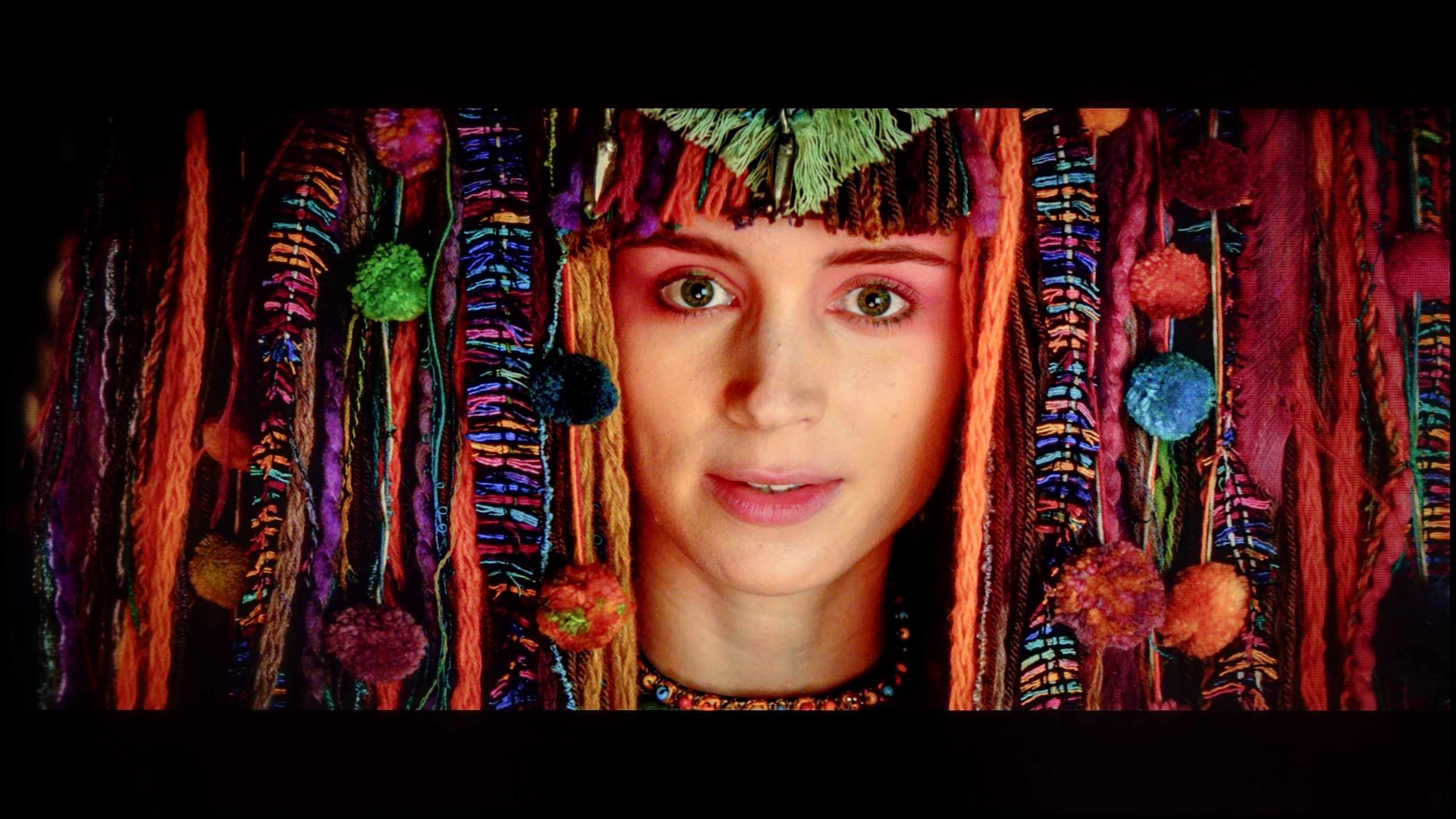
LG offers advanced calibration tools in its televisions such as 65QNED91T6A, which we took advantage of. When it comes to white balance, we were able to significantly correct it in SDR content. The picture mode in 4K HDR quality posed greater challenges, which, although still not perfect, looks better than before calibration. The errors on the Color Checker palette and the colour palette are much smaller than in factory settings. Regarding brightness characteristics, gamma for HD content is practically ideal, with a slight exception at the end of the graph. However, the biggest issues the television had were with brightness in 4K HDR content. Analyzing the EOTF characteristics in films, we noticed that the television manipulates brightness quite significantly, which we observed in earlier tests. Brightness is considerably boosted compared to the graph in the static test, and the television brightens certain scenes to the extent that some smaller elements lose detail. Unfortunately, this is caused by an average local dimming algorithm in this model. Nevertheless, calibration yields decent results, especially in terms of precise colour reproduction.
The calibration of the Movie mode brought really good results, especially regarding SDR content. The white balance was successfully adjusted, which gave the image a natural look – it appeared almost reference-level. The colors were well-saturated, and the overall perception of the content improved significantly. Unfortunately, when we moved to HDR materials, the well-known problems from the U7Q model returned. The TV still tends to “do things its own way,” which is evident from the analysis of the EOTF brightness characteristic – despite calibration, the E8Q still dimmed small details in the shadows, while the bright areas of the screen could sometimes be excessively boosted. In practice, this means that in darker scenes, some of the tiniest details could simply disappear. Although it must be admitted that the entire calibration process brought a lot of good, not everything can be circumvented – even with the use of professional tools. The E8Q can impress with its picture, but in HDR content, its design limitations become noticeable, and it is worth keeping this in mind.
Smoothness of tonal transitions
8.5/10
9.9/10





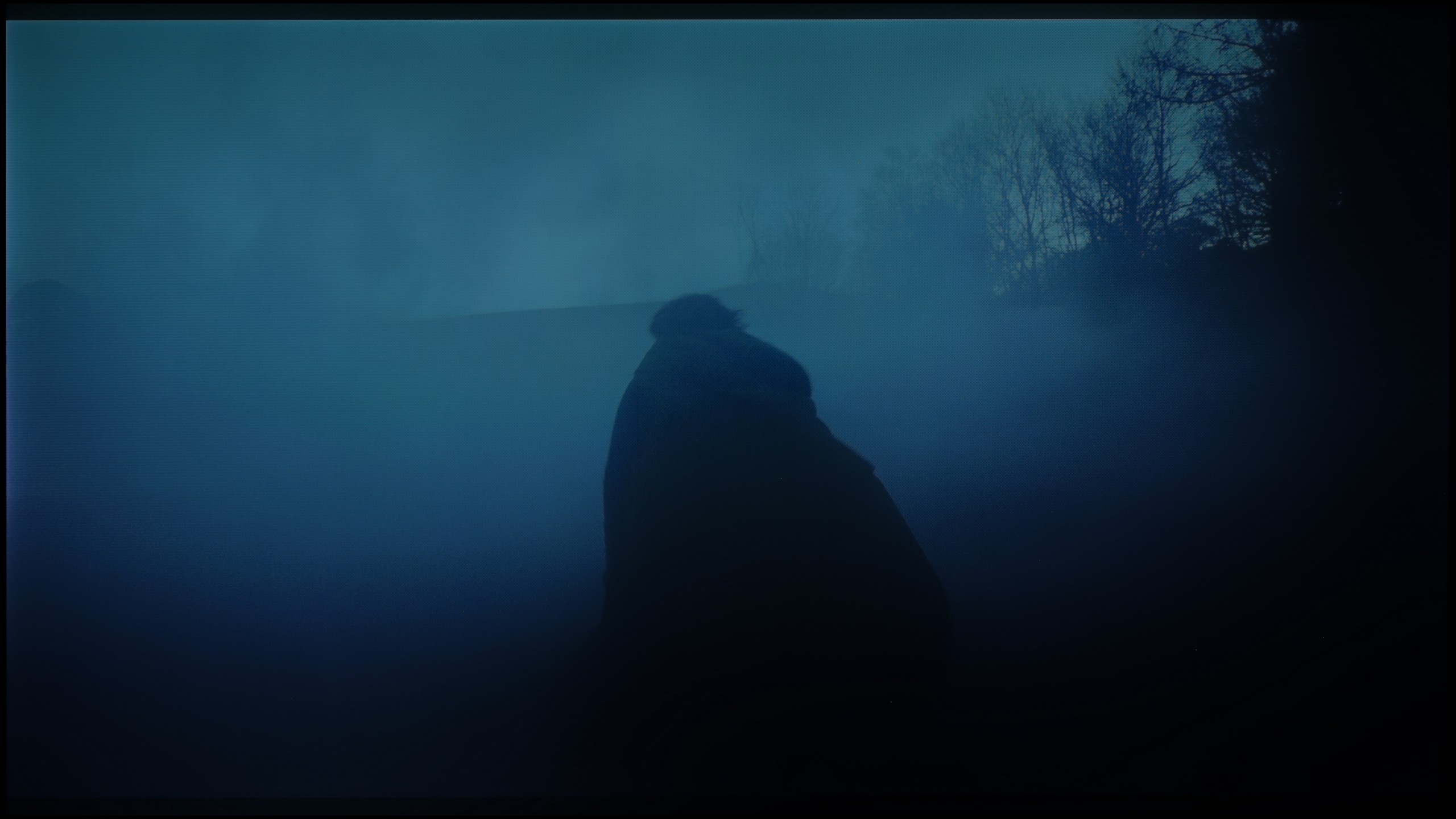

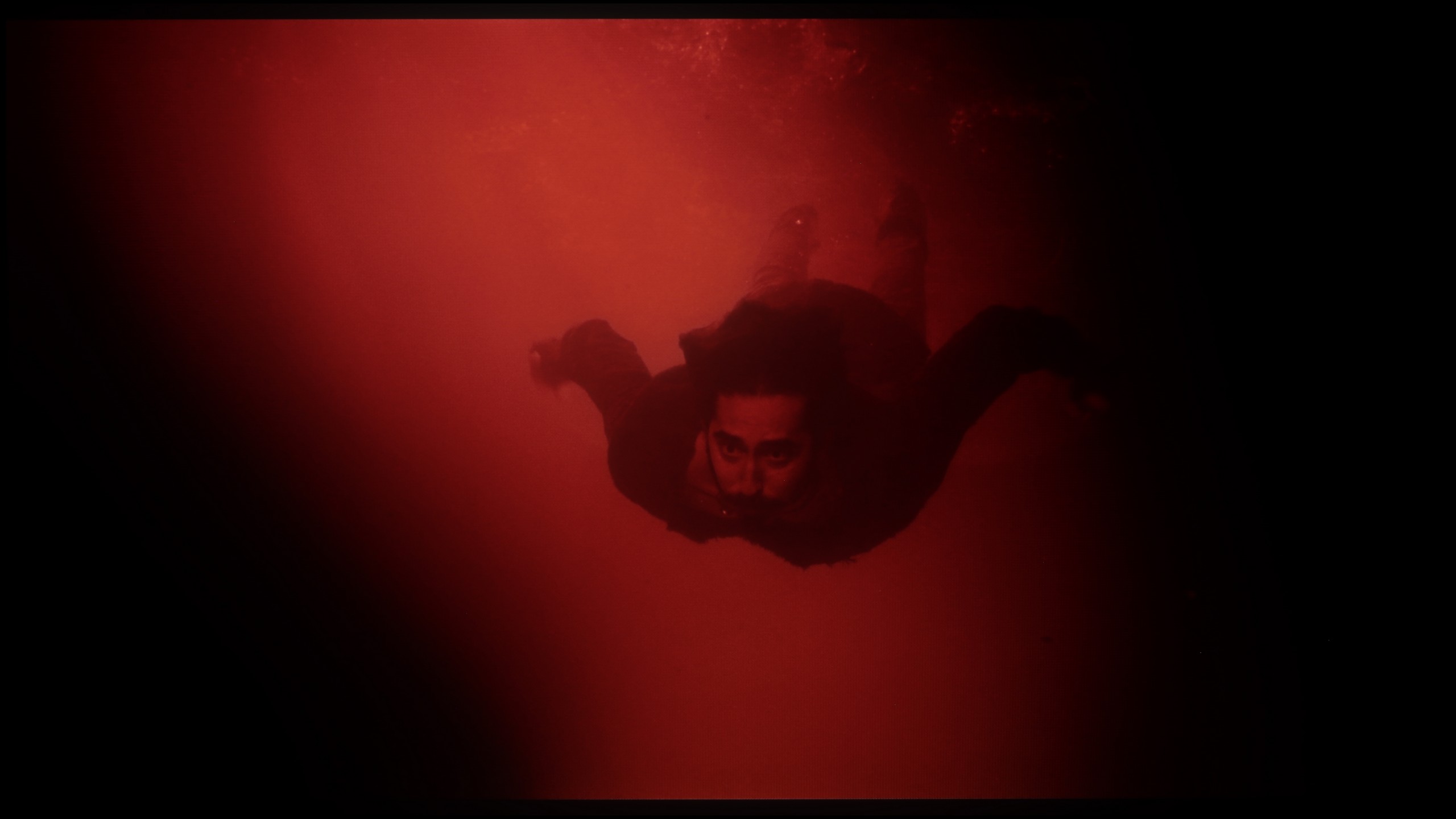




The gradation on LG QNED91T looks very good. There are only slight cut-offs in the brightest scenes, but the television handles blacks very well, providing smooth tonal transitions. As a result, the image is natural and pleasant to the eye, with no noticeable issues.
In this category, the Hisense E8Q truly shows its class. The transitions between colors are very smooth, with no "banding" or clear boundaries between tones. The image looks natural, and the color gradient is exceptionally well-executed – even in more difficult scenes. If there are any minor imperfections, they are subtle enough that they don't stand out. It's hard to find fault here – it looks almost exemplary.
Image scaling and smoothness of tonal transitions
7.5/10
6/10
Smooth transition function


Image without overscan on the SD signal


When it comes to tonal transitions in lower quality materials, the TV offers the already-known feature from LG TVs - "Smooth Gradation." We can control it at three levels: low, medium, and high. We recommend using the medium option, as it effectively removes tonal transitions without causing noticeable issues with removing the structure of objects or other artefacts.
As for image scaling (upscaling), LG's Alpha processor handles this well. The image appears very plastic, with slight jaggedness in some elements, which does not significantly affect the quality. It looks really okay, and the overall effect is very satisfactory.
In the case of older materials with lower quality, a gentle smoothing of tonal transitions is often useful. The Hisense E8Q, like the U7Q, has the "Smooth and Gradient Picture" feature, but unfortunately, its effectiveness leaves much to be desired. The “Low” setting is almost imperceptible in operation, while higher settings simply blur details instead of improving transitions. The good news is that the feature does not compromise the film grain, which allows it to maintain the image structure. On the plus side, the scaling is commendable. The television can fairly sensibly transform older content to a higher resolution—without artificially emphasizing contours or excessive sharpening. Though it does not match the best models in this category, it performs quite well for its class.
Blur and motion smoothness
7.5/10
7.5/10


Blur (native resolution, maximum refresh rate):



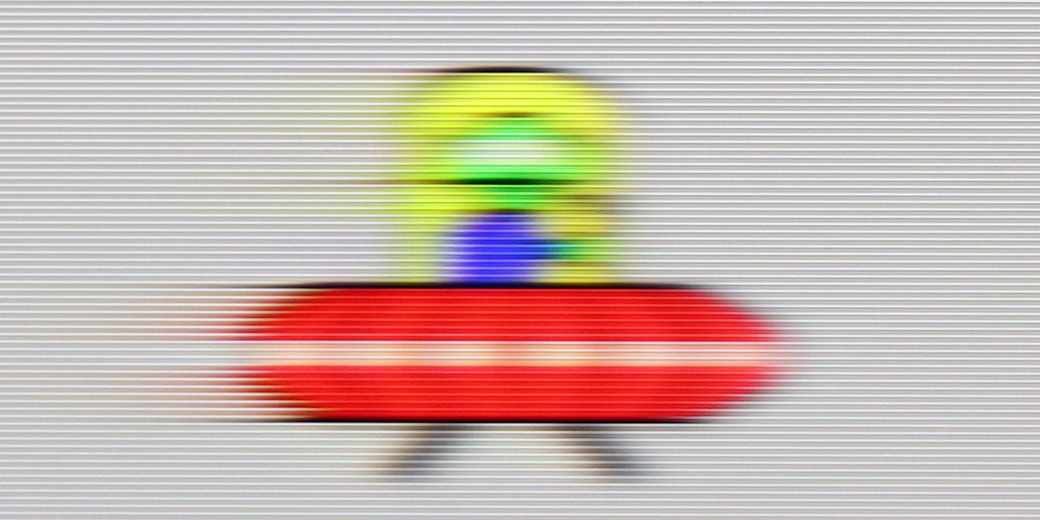
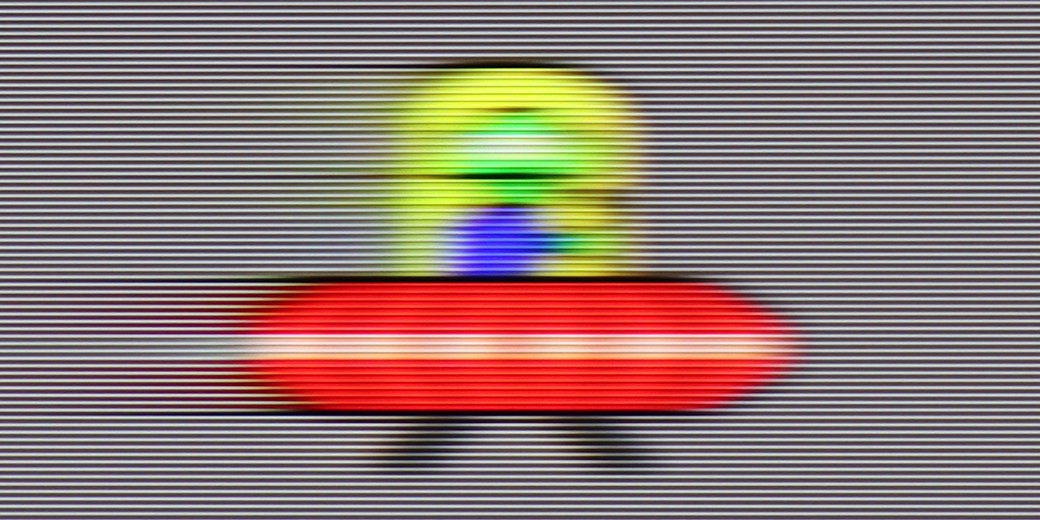
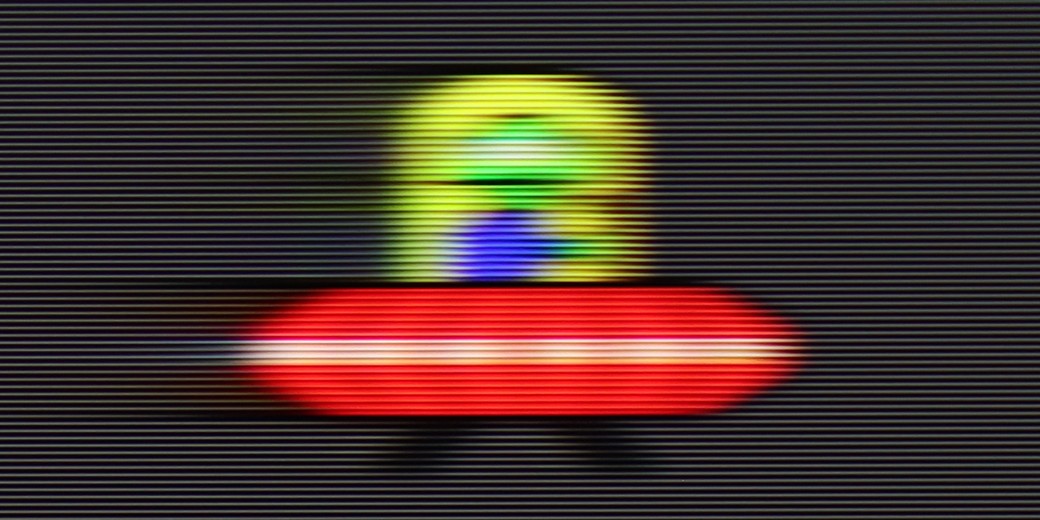
Blur (BFI function enabled):




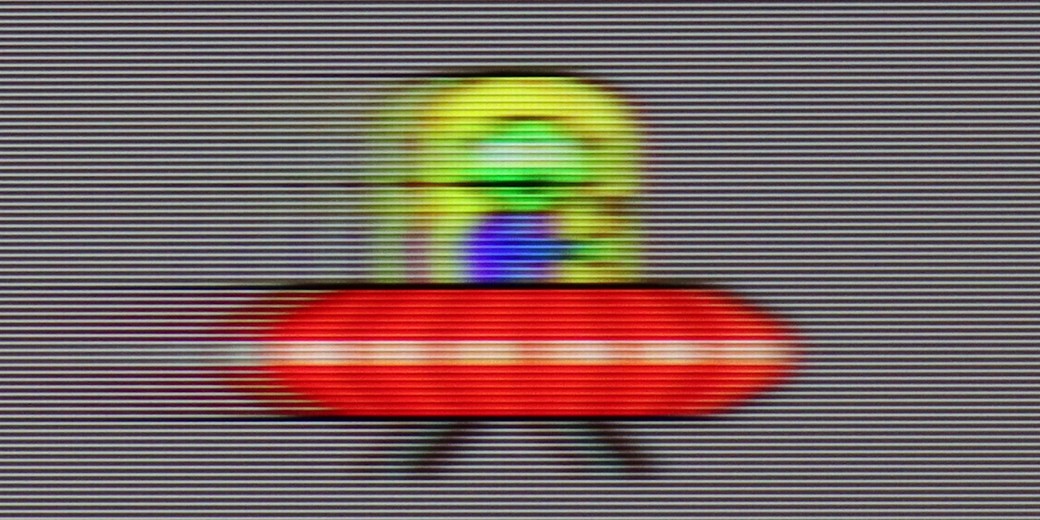
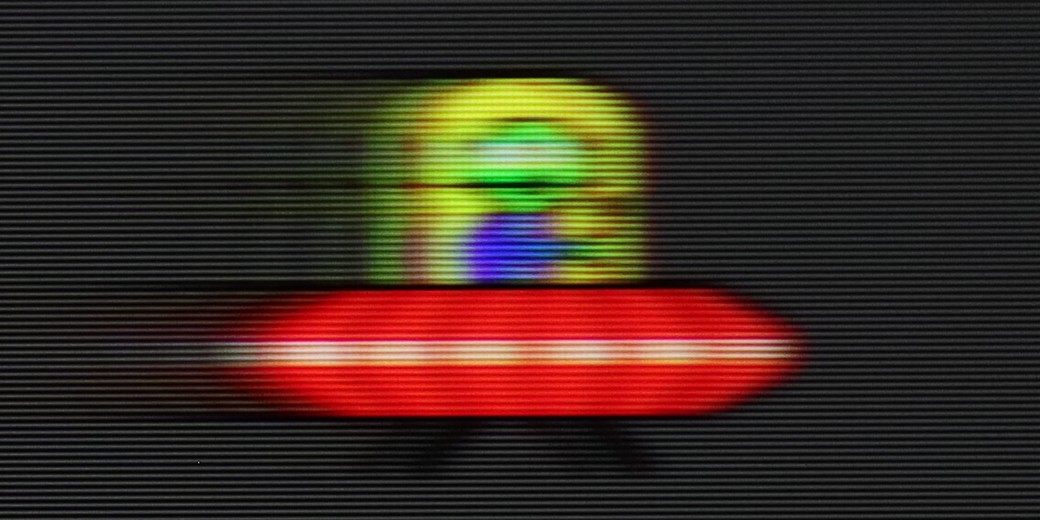
Smużenie ():
Smużenie (4K 120Hz):
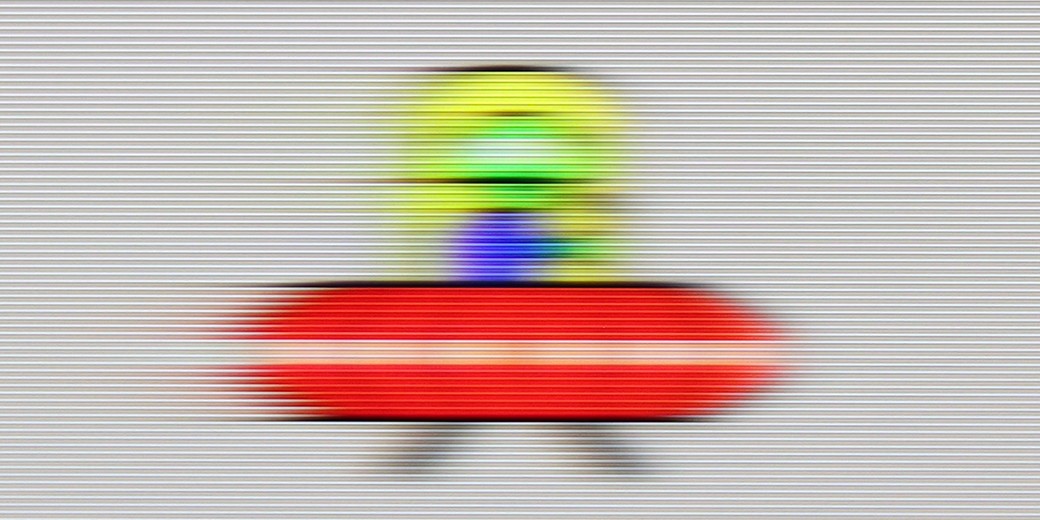
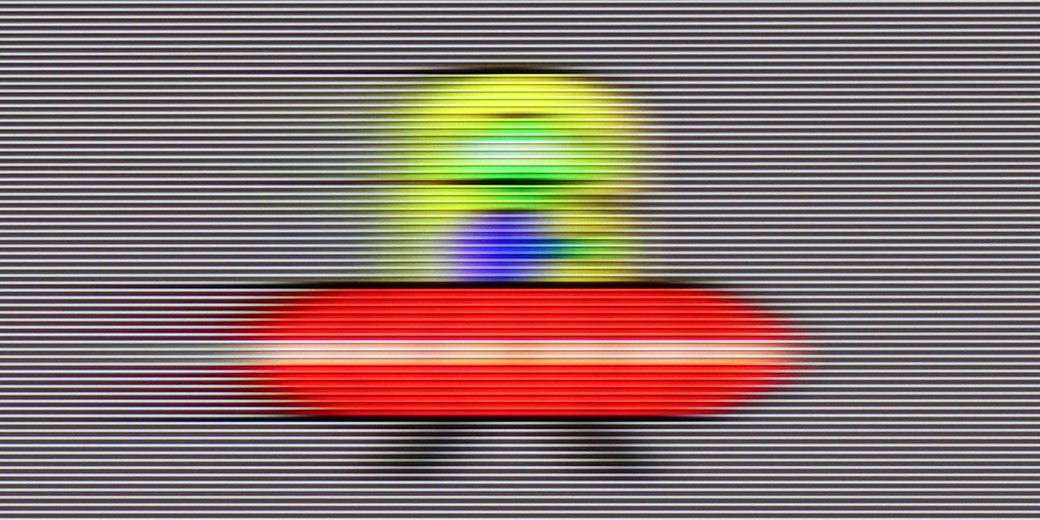
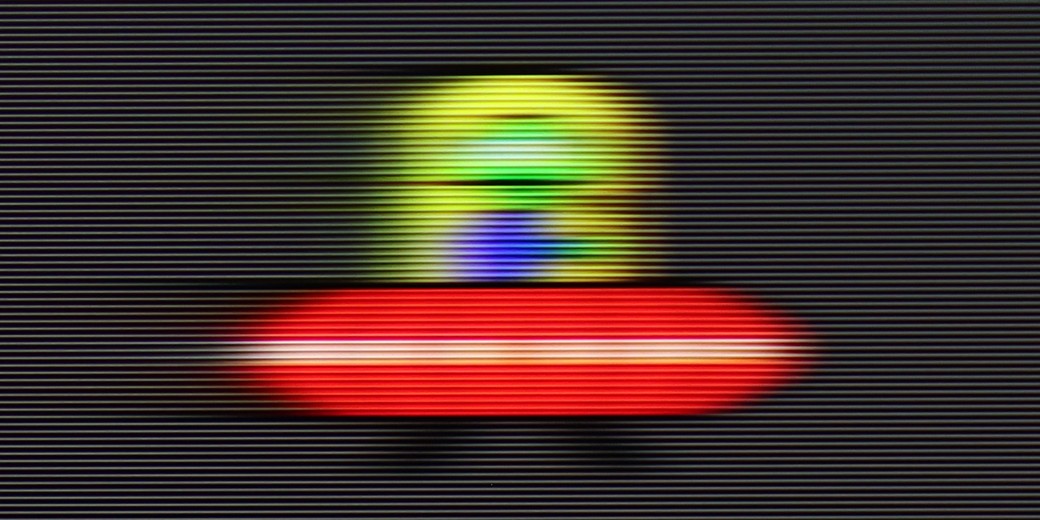
The television has a refresh rate of 120 Hz, which should satisfy most users in terms of motion smoothness. Additionally, QNED91T is equipped with the TruMotion feature, which allows for smoother image display in movies. As part of this feature, we can adjust the "De-Judder" and "De-Blur" sliders. The "De-Judder" slider is responsible for reducing jitter in movies, which is particularly useful when playing content with a lower frame rate, while "De-Blur" helps reduce blurriness in fast scenes, which is essential for sports or dynamic shots.
Like the U7Q, the E8Q model is a fast television designed for dynamic content. It supports 144 Hz refresh rates in 4K resolution, and if for some reason someone is still gaming in Full HD, it can achieve even 240 Hz. This is a significant advantage, especially for PC users looking for maximum fluidity. In everyday use, the television performs very well. The "Ultra Motion Smoothness" mode provides us with two sliders, allowing for personalized image settings – whether it’s more cinematic with preserved film frames or heavily smoothed, almost "series-like." It’s good that the manufacturer gives a choice here instead of imposing one style. On sports materials, live broadcasts, or in games – motion appears clean and stable. Sure, it’s not at the level of OLEDs, but for this price range, the E8Q performs really well.
Console compatibility and gaming features
9.8/10
8.5/10
- ALLM
- VRR
- VRR range48 - 120Hz48 - 240Hz
- Dolby Vision Game Mode
- Correct implementation of HGIG
- 1080p@120Hz
- 1440p@120Hz
- 4K@120Hz
- Game bar



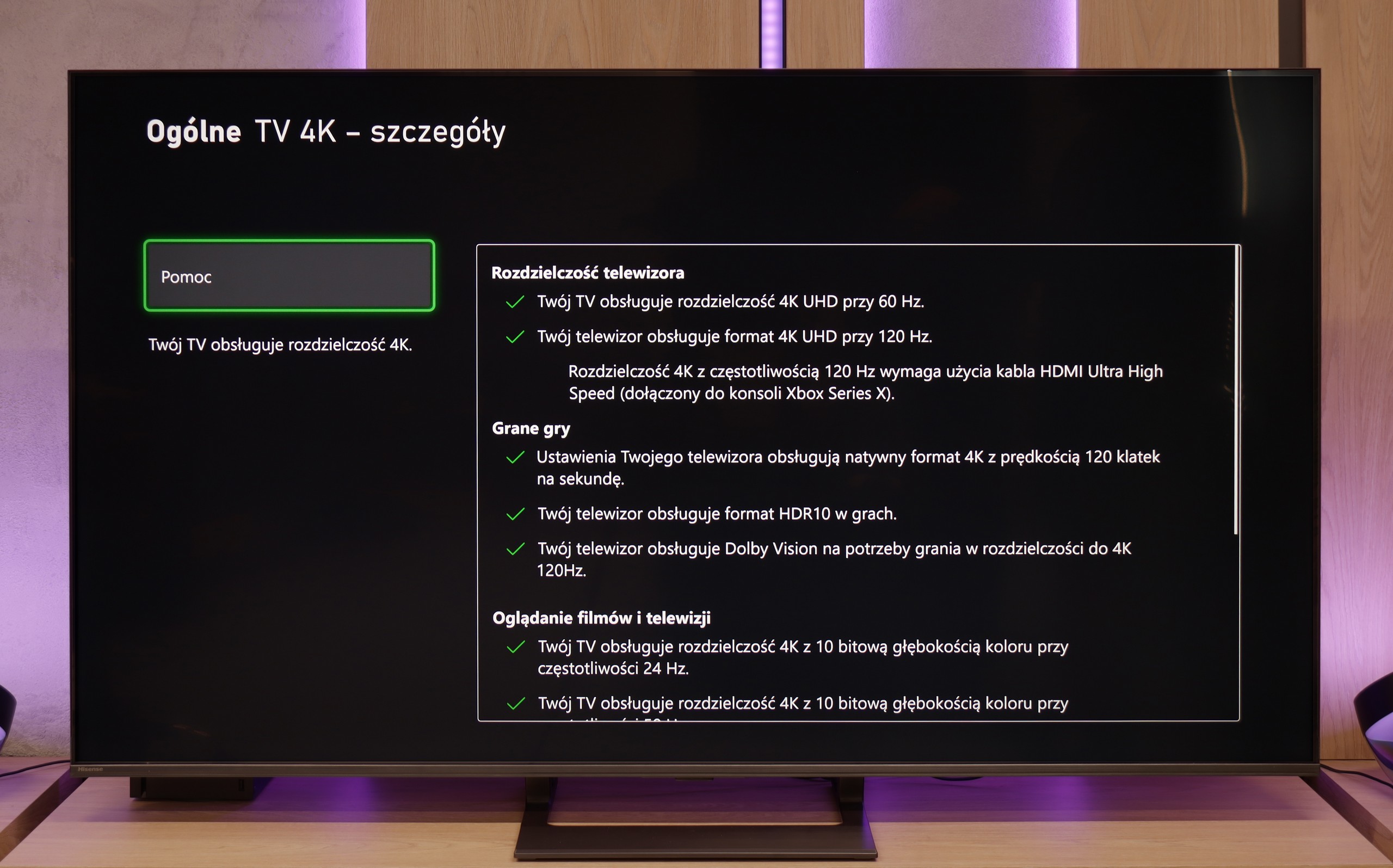

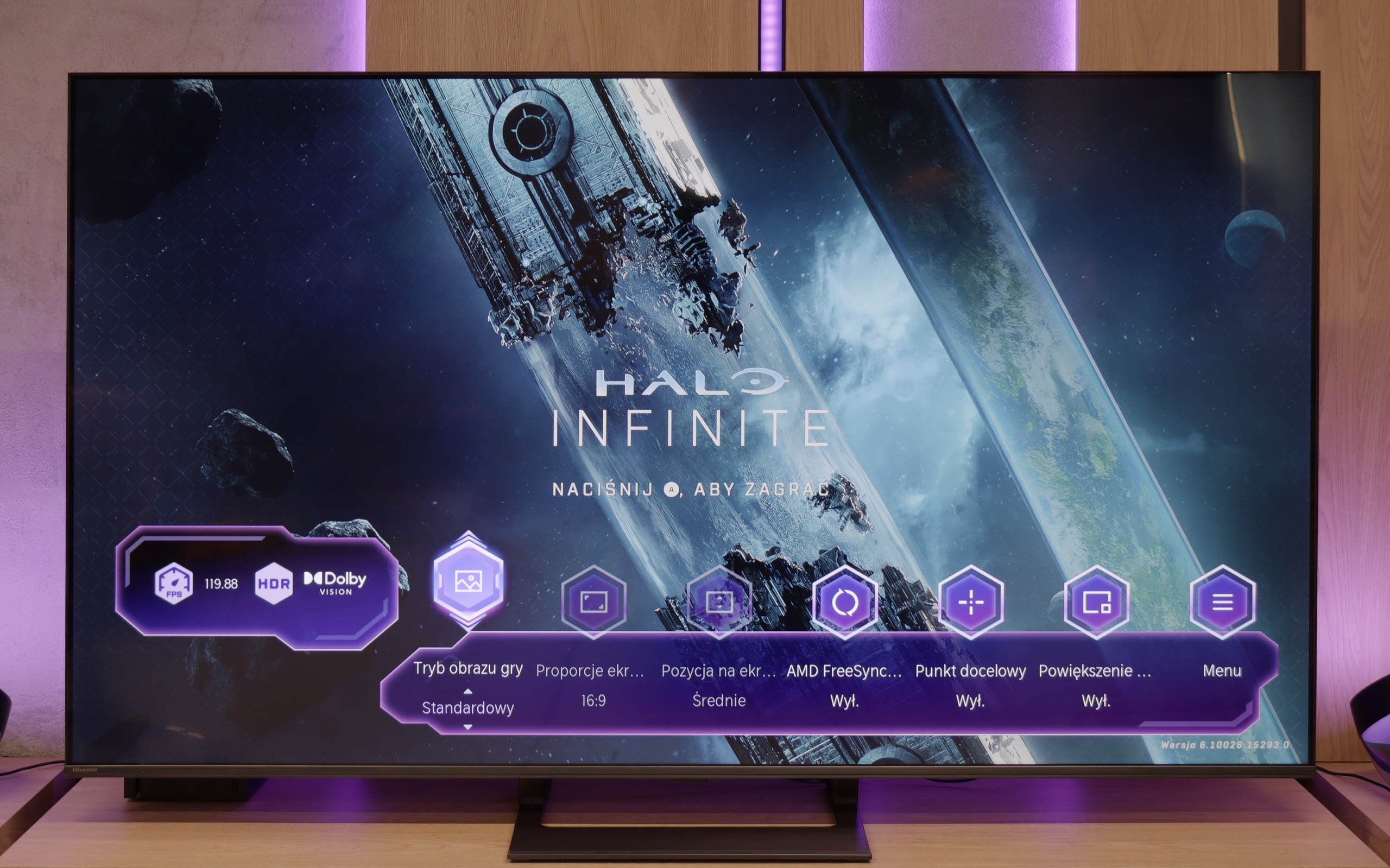


The LG 65QNED91T6A television is equipped with HDMI 2.1 ports with a full bandwidth of 48 Gb/s, providing full support for all standards needed for gaming on modern consoles. We can count on support for variable refresh rate (VRR) and auto low latency mode (ALLM). This ensures smooth gameplay without delays.
With support for all popular HDR standards in games, such as HGiG and Dolby Vision, we can fully harness the potential of the PS5 and XBOX One consoles. The television also easily handles lower resolutions than 4K, so even older consoles look good on it. The Game Bar makes it easy to access gaming-related settings, allowing us to quickly and intuitively adjust picture parameters and features for gamers. Additionally, the QNED91T offers NVIDIA GeForce Now functionality, enabling us to game in the cloud without needing a console. However, it should be noted that this solution is quite expensive and somewhat falls short compared to Xbox Game Pass, which is available only on Samsung TVs.
QNED91T LG is a great choice for less experienced and more advanced gamers looking for a versatile television for gaming.
The Hisense E8Q does not hide its gaming pedigree. The specification alone reveals that we are dealing with a television that will work great as a gaming screen. Variable Refresh Rate (VRR)? Yes. Automatic low latency mode (ALLM)? It's there too. Additionally, there is impressive refreshment – 120 Hz in 4K or even 240 Hz in Full HD. Such a set is rare in this price segment. Everything works smoothly and without major surprises. The only missing element – like in the U7Q – remains support for HGiG. It's a pity, because this feature makes it easier to match the brightness curve to the capabilities of a particular television, improving visual consistency with the intentions of HDR game creators. Without it, one has to manually tweak the settings, which does not always yield a satisfying result.
Input lag
9.8/10
9.7/10
SDR
HDR
Dolby Vision
The input lag on QNED91T is really very low, even in Dolby Vision mode. This allows for a quick response time, which is very important in dynamic games where every millisecond counts. Regardless of whether we play in standard mode or HDR, the TV offers very good results that will satisfy even the most demanding gamers.
The E8Q handles delays very well. For 120 Hz content, the input lag is super low – practically unnoticeable even for more demanding gamers. At 60 Hz, the values are a bit higher, but still comfortably within the "placebo" range – there's nothing to complain about. The biggest increase in lag was noted in Dolby Vision Gaming mode. The TV needs more time to process the signal in this mode, but even then, it does not exceed 30 ms. While these may not be perfect values, they won't pose any obstacles for most gamers – especially console gamers.
Compatibility with PC
7.5/10
8.6/10


When it comes to gaming on a computer, LG QNED91T easily synchronizes with NVIDIA graphics cards and supports G-Sync. The very low input lag makes gaming with a personal computer really enjoyable. The TV supports chroma 4:4:4, which provides excellent text readability. Although we noticed slight font blurring around the edges, overall the image looks great, and readability is acceptable.
In terms of collaboration with the computer, the E8Q performs really well. It supports chroma 4:4:4 at full 4K resolution and at the highest refresh rate, so the readability of fonts – even the smallest ones – is at a very good level. There are minor blurriness issues with exceptionally thin fonts, but in everyday use, this is hard to consider a serious problem. A nice addition for PC gamers is the ability to achieve up to 288 Hz at lower resolutions. The E8Q communicates effortlessly with powerful graphics cards, making it an interesting choice not only for movies or consoles but also for gaming on a computer.
Viewing angles
3.4/10
3/10
As we mentioned in the paragraph about contrast, the TV is equipped with a VA panel, which usually offers very good contrast compared to IPS panels. Unfortunately, VA panels have their weakness in the form of limited viewing angles, which is also visible in the case of QNED91T LG. The viewing angles are not the best here, and while the use of a coating to widen the angles could significantly improve the situation, unfortunately, we do not have that here. As a result, the image loses quality when viewed from a greater angle, which can be problematic when multiple people are watching simultaneously.
E8Q, like most TVs with a VA panel, looks best when we sit directly in front of the screen. In this position, one can count on deep blacks, good color saturation, and high contrast. Unfortunately, just moving slightly to the side causes the picture quality to suffer – colors start to fade, and blacks become more gray than black. This isn't surprising, but it's worth keeping in mind, especially if we plan to watch in a larger group from different positions in the living room. As a consolation – in return, we get significantly better black levels than with IPS panels.
TV efficiency during daytime
6.1/10
6.2/10



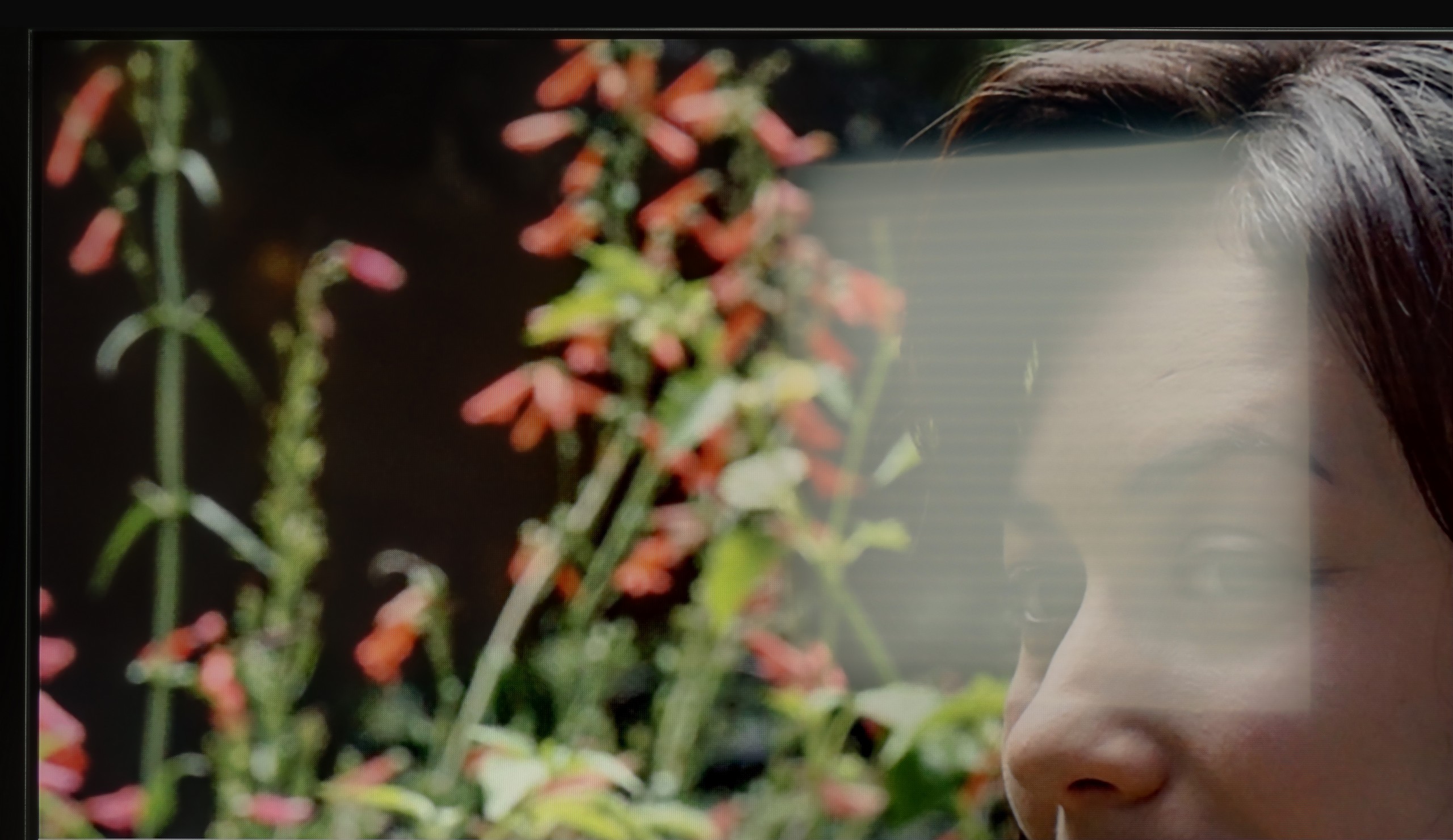
Matrix brightness
Average luminance SDR
Hisense E8Q: 504 cd/m2
LG QNED91T6A: 573 cd/m2
The LG 65QNED91T6A television is equipped with a satin matrix, which performs average in handling direct light reflections, such as from lamps or wall sconces. In the first test photo with a large lamp, it is visible how the reflection "spreads across the screen." However, the QNED91T makes up for it in terms of brightness - the average SDR brightness of 580 cd/m² is sufficient for watching television even in more challenging lighting conditions. As a result, despite issues with reflections, the television performs well during the day.
The Hisense E8Q is not afraid of bright interiors. Even when the full sun is shining outside, the television can maintain good image clarity. A brightness level of around 500 nits ensures that you can comfortably watch content during the day, without feeling that everything is drowning in glare. The satin screen coating also helps to pleasantly reduce reflections – it doesn't eliminate them completely, but limits them enough that they don't interfere with everyday viewing.
Details about the matrix
Subpixel Structure:

Panel uniformity:

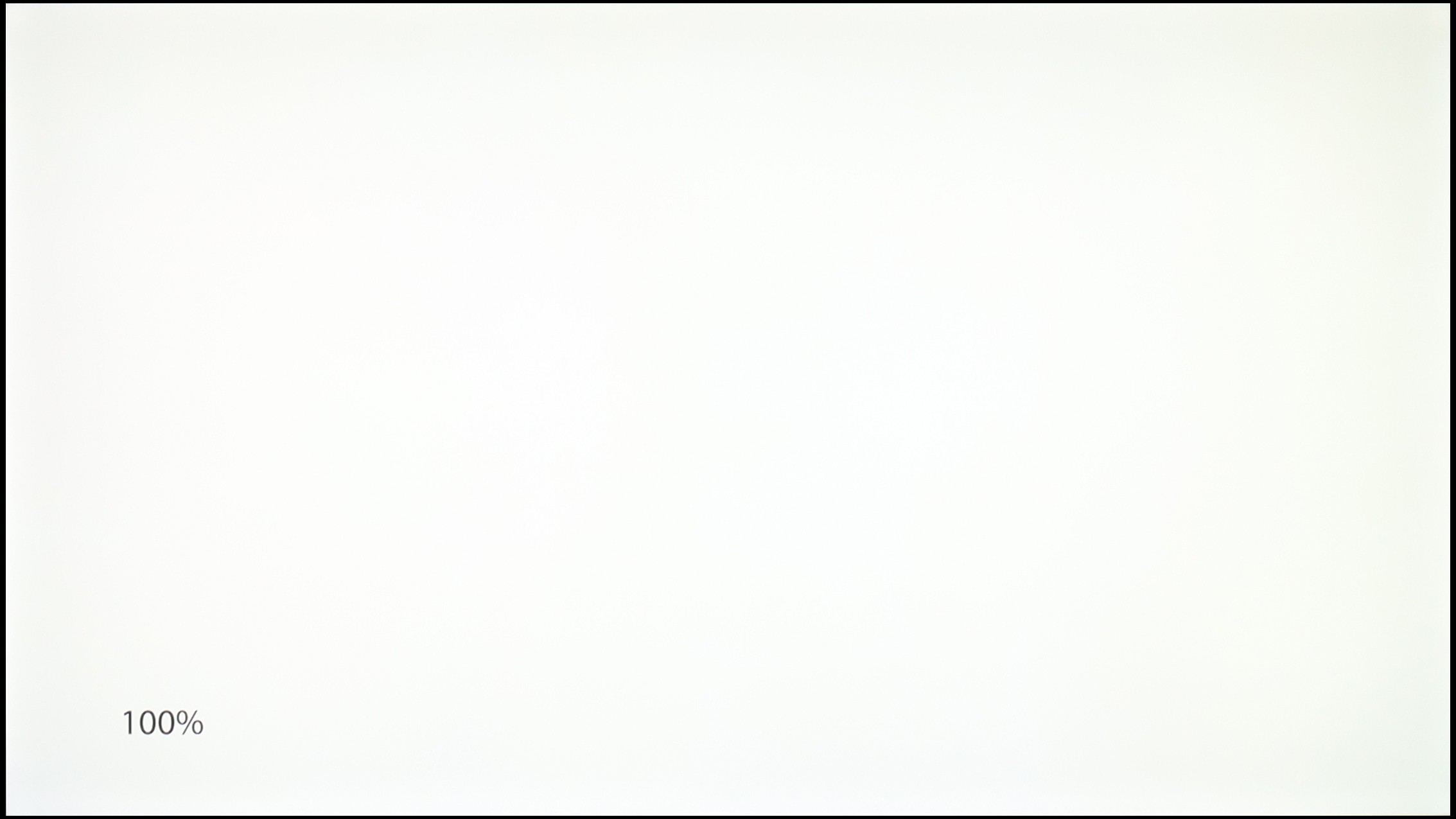
LG QNED91T6A
Hisense E8Q
TV features
9/10
8.9/10
- HDMI inputs0 x HDMI 2.0, 4 x HDMI 2.1 48Gbps2 x HDMI 2.0, 2 x HDMI 2.1 48Gbps
- Other inputsRCA (Chinch)
- OutputsToslink (Optical audio), eARC (HDMI), ARC (HDMI)Toslink (Optical audio), eARC (HDMI), ARC (HDMI), Mini-Jack (Headphones)
- Network InterfacesWi-Fi 2.4GHz, Wi-Fi 5GHz, Ethernet (LAN) 100MbpsWi-Fi 2.4GHz, Wi-Fi 5GHz, Ethernet (LAN) 100Mbps
- TV receptionDVB-T, DVB-T2, DVB-S, DVB-S2, DVB-CDVB-T, DVB-T2, DVB-S, DVB-S2, DVB-C
Classic features:
- Recording to USB (terrestrial TV)
- Recording programming
- Picture in Picture (PiP)
- RF remote control (no need to aim at the screen)
- Backlit remote control
- Teletext
- Audio only mode
- Possibility to connect Bluetooth headphones to the TV
- Possibility to simultaneously use Bluetooth headphones and the TV speaker
Smart features:
- AirPlay
- Screen mirroring (Windows Miracast)
- Wyszukiwanie głosowe
- Voice search in native language
- Ability to connect a keyboard and mouse


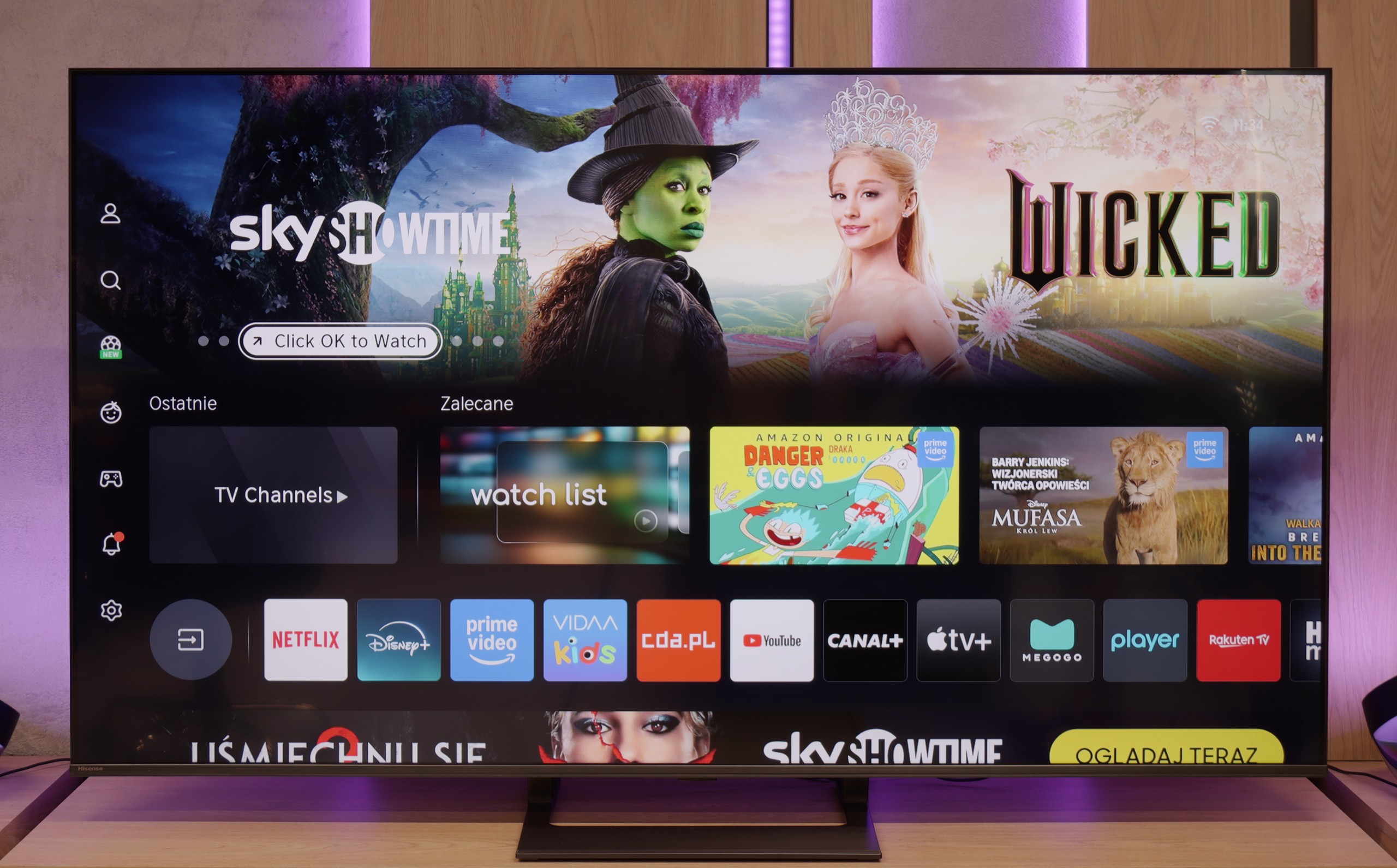
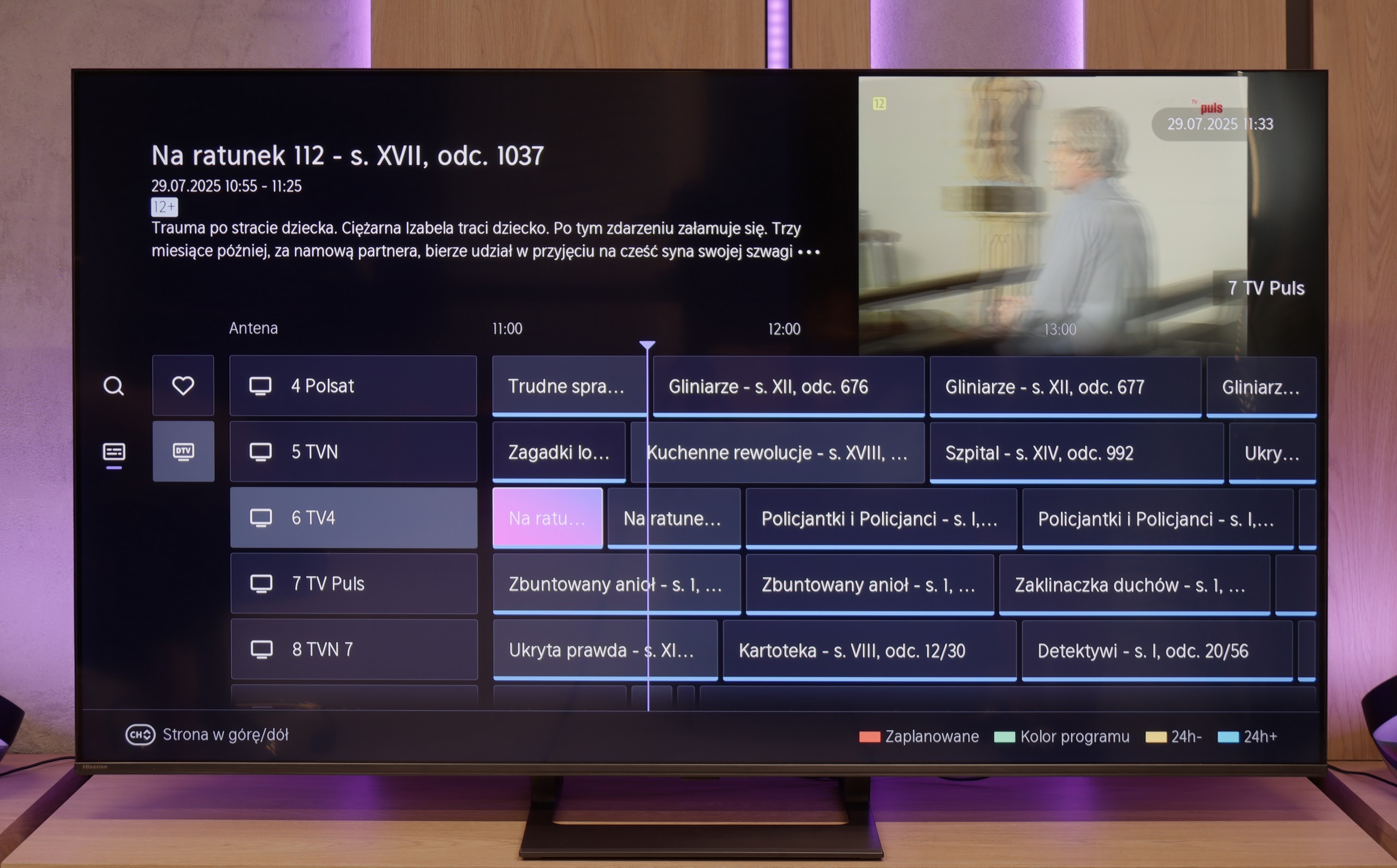


The most important thing in today's TVs, besides picture quality, is the operating system. The one available in LG models is really very good. Of course, we are talking about the WebOS system, which offers the most popular apps similar to GoogleTV. What sets this system apart is primarily the great remote control with an accelerometer - the Magic Remote, which resembles a magic wand. Controlling with this remote is extremely convenient.
In terms of user functions, the TV offers practically everything one could wish for. Here we find the ability to record programs from built-in tuners, support for AirPlay to connect an iPhone, and a mirroring function. We can easily connect keyboards, mice, or headphones, although keyboards are not necessary thanks to the convenient Magic Remote. Unfortunately, there is no PiP (Picture-in-Picture) function, but this is such a specific feature that only those who actually need it will feel its absence. The QNED91T is a TV that does not disappoint when it comes to everyday enjoyment of its use.
Classic Features – E8Q
The Hisense E8Q is not only equipment for gamers or movie enthusiasts – it can also serve as a daily television for the entire family. We can record programs to USB, connect headphones or speakers via Bluetooth, and the entire interface – including the channel guide – is clear and easy to use. It only lacks the PiP function, but aside from that, the set of classic features is truly complete.
Smart TV – VIDAA System
The E8Q runs on the VIDAA system, which is becoming more refined year by year. Voice search in Polish works flawlessly, and it's easy to cast from your phone (AirPlay and screen mirroring). The system operates smoothly, without any hiccups, although – as is often the case with closed platforms – there may occasionally be one or two less popular apps missing. Therefore, it’s worth checking before purchase to see if everything we use daily is available there.
Playing files from USB
8.5/10
8.2/10
Supported photo formats:
Maximum photo resolution:

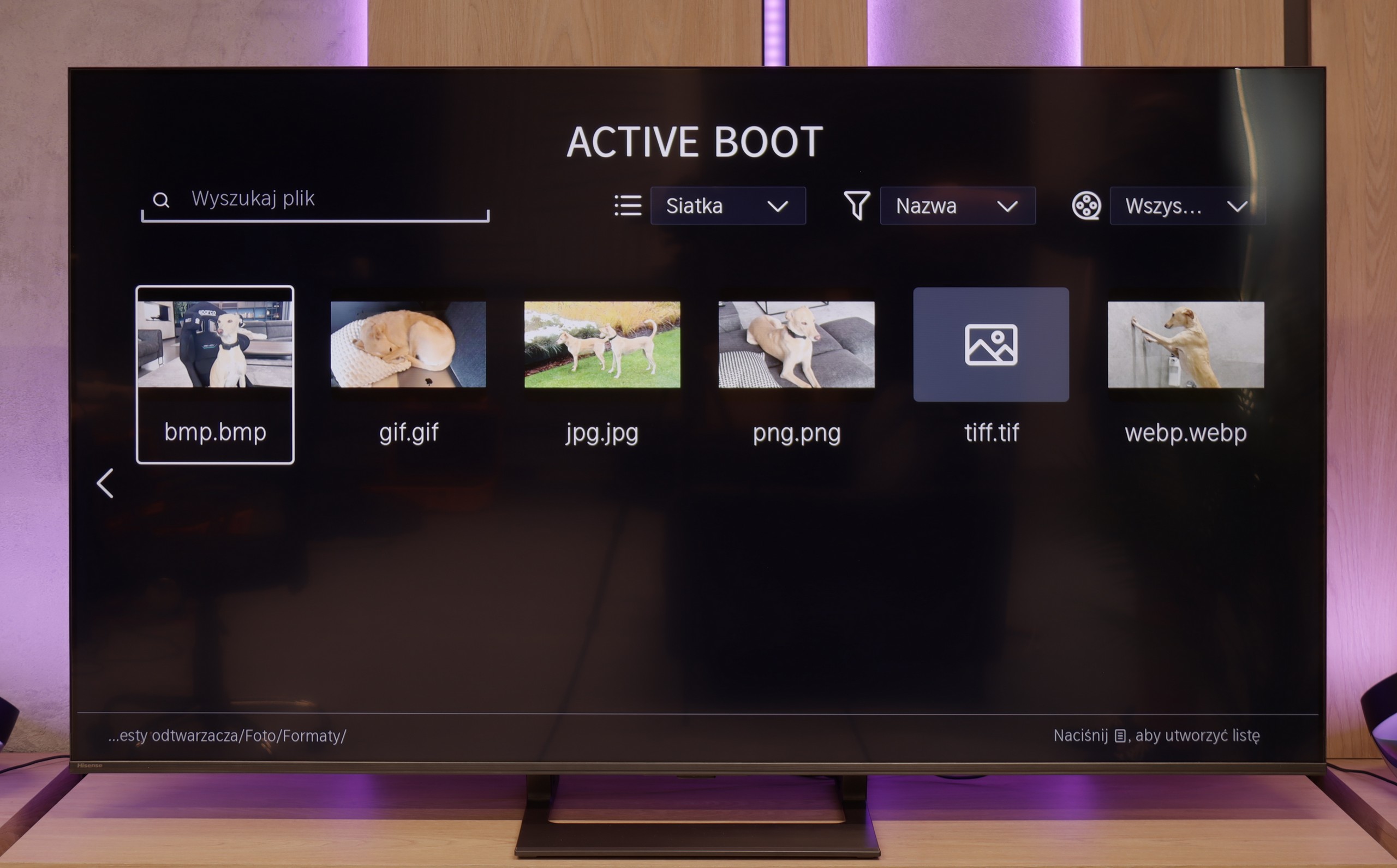
The built-in player in QNED91T should satisfy most users. It easily supports Polish characters and plays movies with subtitles from external drives. The player also handles most audio and photo formats, except for Apple HEIC files.
The built-in media player in E8Q performs quite well. It supports most popular video and audio formats, and files from USB drives or external disks play without major issues. Polish characters? They are supported. Subtitles? They work. The only minor drawback is the occasional problem with displaying high-resolution images – especially those from cameras or smartphones. So if you plan to show vacation photos on a large screen, it’s worth checking in advance whether they will all load correctly from the drive’s memory or USB stick.
Apps
8.3/10
7.7/10














































Sound
6.9/10
5.5/10
- Subjective sound quality:6.9/105.5/10
- Dolby Digital Plus 7.1:
- Dolby True HD 7.1:
- Dolby Atmos in Dolby Digital Plus (JOC):
- Dolby Atmos in Dolby True HD:
- DTS:X in DTS-HD MA:
- DTS-HD Master Audio:
LG QNED91T is equipped with a set of 4 speakers in a 2.2 configuration with a total power of 40W. The television sounds quite pleasant, and the subtle bass is noticeable. Of course, it is not on the level of an external audio system, such as a soundbar or home theatre, but it is sufficient for everyday use. It is also worth praising the support for audio formats DTS:X and Dolby Atmos, which significantly improve the quality of the audio experience.
Unfortunately, the Hisense E8Q did not leave the best impression on us. Although on paper it has speakers with a power of 40 W (which is only slightly less than the 50 W in the U7Q), in practice, the difference is significant—and unfortunately not in favor of the E8Q. During testing, it quickly became apparent that something was off. When the volume was raised above 40-50%, the entire back housing began to resonate, and unpleasant crackling sounds emerged from the television. Even during regular viewing, it was hard not to notice this, and definitely hard not to hear it. In this form, it is difficult to talk about listening comfort. We do not rule out that this was a problem with a specific test unit, but nonetheless—it is worth keeping this in mind. If good sound is important to you, consider connecting a soundbar or… stick with the U7Q, which performs significantly better.


